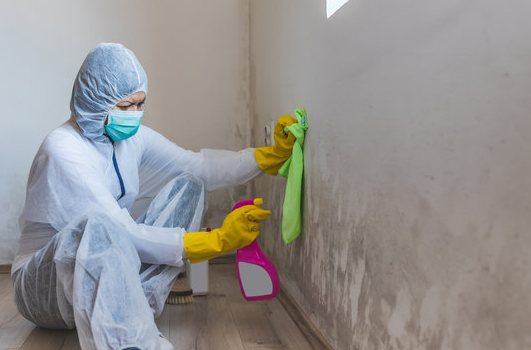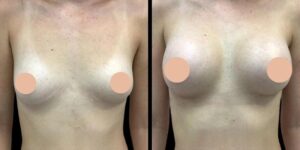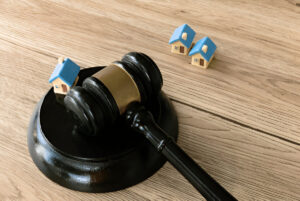
Health Problems Caused by Mold Exposure and How to Stay Safe
Mold is more than just a household nuisance—it’s a serious health hazard. Whether it’s growing behind your bathroom wall or hiding under your basement carpet, mold can wreak havoc on your health without you even knowing. From sneezing fits to severe respiratory problems, mold exposure can trigger a wide range of symptoms that affect both children and adults.
In this comprehensive guide, we’ll break down the health problems caused by mold exposure, explain why it keeps returning, and show you how to stay safe—especially with expert help from trusted professionals like Home Doctor Restoration.
What Is Mold and Why Should You Be Concerned?
Mold is a type of fungus that thrives in damp, warm, and humid conditions. While some mold is harmless (like the kind used in cheese-making), household mold is a different story. Black mold, green mold, and white mold varieties can silently spread across ceilings, walls, carpets, and HVAC systems.
The spores released by mold are microscopic and can travel through the air, entering your lungs when you breathe. That’s when the health risks begin.
Common Health Problems Caused by Mold Exposure
The effects of mold exposure vary from person to person. Some people may not experience any symptoms at all, while others may suffer severely. Here are the most common health issues caused by mold:
1. Allergic Reactions
One of the earliest signs of mold exposure is an allergic response. Common symptoms include:
-
Sneezing
-
Runny or blocked nose
-
Red, itchy eyes
-
Skin rashes
-
Coughing
These reactions occur when your immune system detects mold spores as harmful and tries to fight them off. If you’ve noticed allergy symptoms getting worse inside your home, it could be time to check for hidden mold.
2. Asthma and Breathing Issues
Mold exposure can seriously affect people with asthma or other respiratory conditions. In fact, mold spores can act as asthma triggers and cause:
-
Wheezing
-
Chest tightness
-
Shortness of breath
-
Increased need for inhalers
Even those without a history of asthma may develop breathing difficulties if exposed to mold for a long time.
3. Sinus Infections and Nasal Congestion
Chronic mold exposure can inflame your sinuses and nasal passages. You might experience:
-
Frequent sinus infections
-
Headaches
-
Post-nasal drip
-
Nasal stuffiness that won’t go away
If these symptoms linger despite medications or antibiotics, mold could be the culprit.
4. Skin Irritation
Touching mold or surfaces contaminated with spores can cause skin problems such as:
-
Rashes
-
Itchy skin
-
Hives
-
Eczema flare-ups
If your skin reacts after cleaning damp areas or handling materials from your attic or basement, don’t ignore it.
5. Eye and Throat Irritation
Irritated eyes and a scratchy throat are classic signs of mold exposure. These symptoms often accompany indoor air pollution and may include:
-
Itchy or watery eyes
-
Dry throat
-
Persistent cough
-
Burning sensations
Prolonged exposure can make these issues worse and increase your risk of infections.
6. Fatigue and Mental Fog
Many people report feeling unusually tired, sluggish, or mentally foggy when living in mold-infested environments. This condition is often referred to as “mold sickness” and can also include:
-
Difficulty concentrating
-
Memory problems
-
Headaches
-
Mood changes
This happens because mold releases mycotoxins—chemical compounds that can disrupt your nervous system and immune response.
7. Weakened Immune System
For individuals with compromised immune systems—like the elderly, infants, or people undergoing chemotherapy—mold exposure can lead to severe health risks. These may include fungal infections that affect the lungs or bloodstream, which can become life-threatening if not treated immediately.
Who’s Most at Risk from Mold Exposure?
Although mold can affect anyone, some people are more vulnerable, including:
-
Infants and children
-
Seniors
-
People with asthma or allergies
-
Individuals with weakened immune systems
-
Pregnant women
If anyone in your household falls into these categories, mold should be taken very seriously and addressed immediately.
Common Places Mold Hides in Your Home
Mold doesn’t just grow where you can see it. Often, it hides in hard-to-reach areas, including:
-
Behind drywall
-
Underneath carpets and floorboards
-
Inside air ducts and HVAC systems
-
Around leaky pipes and faucets
-
In basements and attics
These hidden areas are typically dark, damp, and rarely ventilated—ideal conditions for mold growth.
Why Mold Keeps Coming Back
You’ve cleaned it once, and it comes back again and again. Why?
The main reason mold keeps returning is because the moisture problem hasn’t been fixed. Whether it’s a leaky pipe, poor ventilation, or high humidity, mold will keep growing unless the root cause is resolved.
Home Doctor Restoration specializes in identifying the sources of mold and eliminating them for good. From moisture inspections to advanced drying techniques, their team helps ensure your mold problem is solved—not just cleaned up.
How to Stay Safe from Mold Exposure
Preventing mold is all about controlling moisture and taking swift action when you spot a problem. Here’s what you can do:
1. Control Humidity Levels
Keep indoor humidity between 30% and 50%. You can use dehumidifiers in damp areas like basements or bathrooms to help control moisture.
2. Improve Ventilation
Ensure your home is well-ventilated, especially in high-moisture areas. Use exhaust fans in bathrooms and kitchens, and keep windows open when possible.
3. Fix Leaks Immediately
Don’t ignore water leaks—no matter how small. A dripping pipe can become a breeding ground for mold within 24-48 hours.
4. Clean and Dry After Flooding
After a flood or water damage, it’s essential to dry the affected area quickly and thoroughly. This is where professional services like Home Doctor Restoration come in handy. They provide emergency water removal and mold prevention services to safeguard your home.
5. Regular Mold Inspections
Schedule regular inspections, especially if you live in a humid climate. Professionals can identify hidden mold and potential moisture risks before they become serious health hazards.
When to Call the Pros: Home Doctor Restoration to the Rescue
DIY cleaning methods like vinegar or bleach may provide temporary relief, but they don’t address hidden mold or stop it from coming back. If you’ve tried everything and still notice signs of mold or health issues, it’s time to call Home Doctor Restoration.
Here’s what they offer:
-
Comprehensive Mold Inspections
-
Moisture Detection and Control
-
Professional Mold Remediation
-
HEPA Filtration and Air Purification
-
Preventive Waterproofing and Sealing
With years of experience and advanced tools, Home Doctor Restoration helps homeowners protect their health, property, and peace of mind.
Final Thoughts
Mold is more than just a cosmetic issue—it can have serious, long-lasting effects on your health. From allergies and asthma to fatigue and infections, mold exposure should never be taken lightly. Fortunately, you can protect yourself and your loved ones with proper prevention and professional support.
If you’re dealing with recurring mold or unexplained health symptoms, don’t wait. Reach out to Home Doctor Restoration and let their expert team handle the problem with care and precision.
Frequently Asked Questions (FAQs)
1. How can I tell if mold is making me sick?
If you notice symptoms like sneezing, coughing, itchy eyes, or breathing issues that improve when you leave the house, mold could be the cause. A professional mold inspection can confirm this.
2. Can I clean mold myself, or should I hire a professional?
For small, visible spots of mold (like on a bathroom tile), DIY cleaning can help. However, if the problem is widespread or keeps coming back, you should hire professionals like Home Doctor Restoration to ensure thorough and safe removal.
3. What’s the best way to prevent mold in my home long-term?
Control moisture! Keep your home dry and well-ventilated. Use dehumidifiers, fix leaks promptly, and schedule regular mold inspections, especially after water damage.



